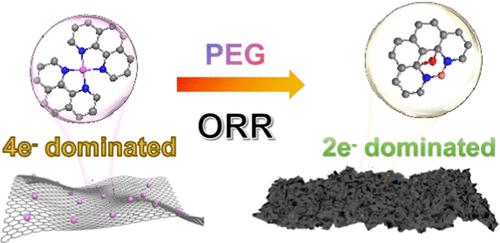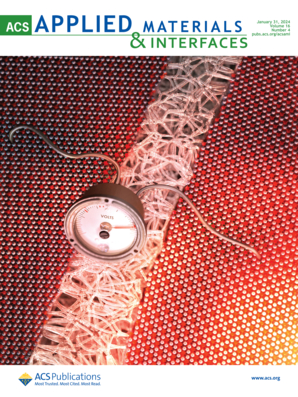Tailoring Oxygen Reduction Selectivity for Acidic H2O2 Electrosynthesis on Single-Atom Co–N–C Catalyst via PEG Post-treatment
IF 8.3
2区 材料科学
Q1 MATERIALS SCIENCE, MULTIDISCIPLINARY
引用次数: 0
Abstract
The selective two-electron oxygen reduction reaction (ORR) for H2O2 electrosynthesis provides a promising alternative to anthraquinone-based redox technology. However, atomically dispersed Co–N–C materials routinely lead the ORR process to follow a four-electron path via accessible Co–N4 moieties rather than terminating in competitive H2O2 production. Herein, we demonstrate that by simultaneously reconstructing Co–N2–C and modifying oxygen functional groups into a Co-adjacent carbon matrix through low-temperature pyrolysis with oxygen-containing molecules, a Co SAC four-electron catalyst with typical Co–N4 sites can be transformed into a Co SAC-PEG electrocatalyst with high H2O2 selectivity. A combination of X-ray absorption and infrared spectroscopy confirmed that the shift in ORR selectivity from the four-electron pathway to the two-electron pathway originated from the transfer of the real active sites from rigid in-plane embedded Co–N4 to the oxygen functional groups modified with low-coordinated Co–N2–C for Co SAC-PEG. In stark contrast to the remarkable 4e– prototype Co SAC, the Co SAC-PEG after treatment has a surprising Eonset and selectivity for H2O2 electrosynthesis in acidic electrolytes. This study presents a new avenue for the selective manipulation of the ORR pathway via tailoring the flexible structure of single Co sites by a one-step post treatment process, ultimately converting the readily available 4e– catalyst directly into a difficult-to-obtain 2e– catalyst.

求助全文
约1分钟内获得全文
求助全文
来源期刊

ACS Applied Materials & Interfaces
工程技术-材料科学:综合
CiteScore
16.00
自引率
6.30%
发文量
4978
审稿时长
1.8 months
期刊介绍:
ACS Applied Materials & Interfaces is a leading interdisciplinary journal that brings together chemists, engineers, physicists, and biologists to explore the development and utilization of newly-discovered materials and interfacial processes for specific applications. Our journal has experienced remarkable growth since its establishment in 2009, both in terms of the number of articles published and the impact of the research showcased. We are proud to foster a truly global community, with the majority of published articles originating from outside the United States, reflecting the rapid growth of applied research worldwide.
 求助内容:
求助内容: 应助结果提醒方式:
应助结果提醒方式:


